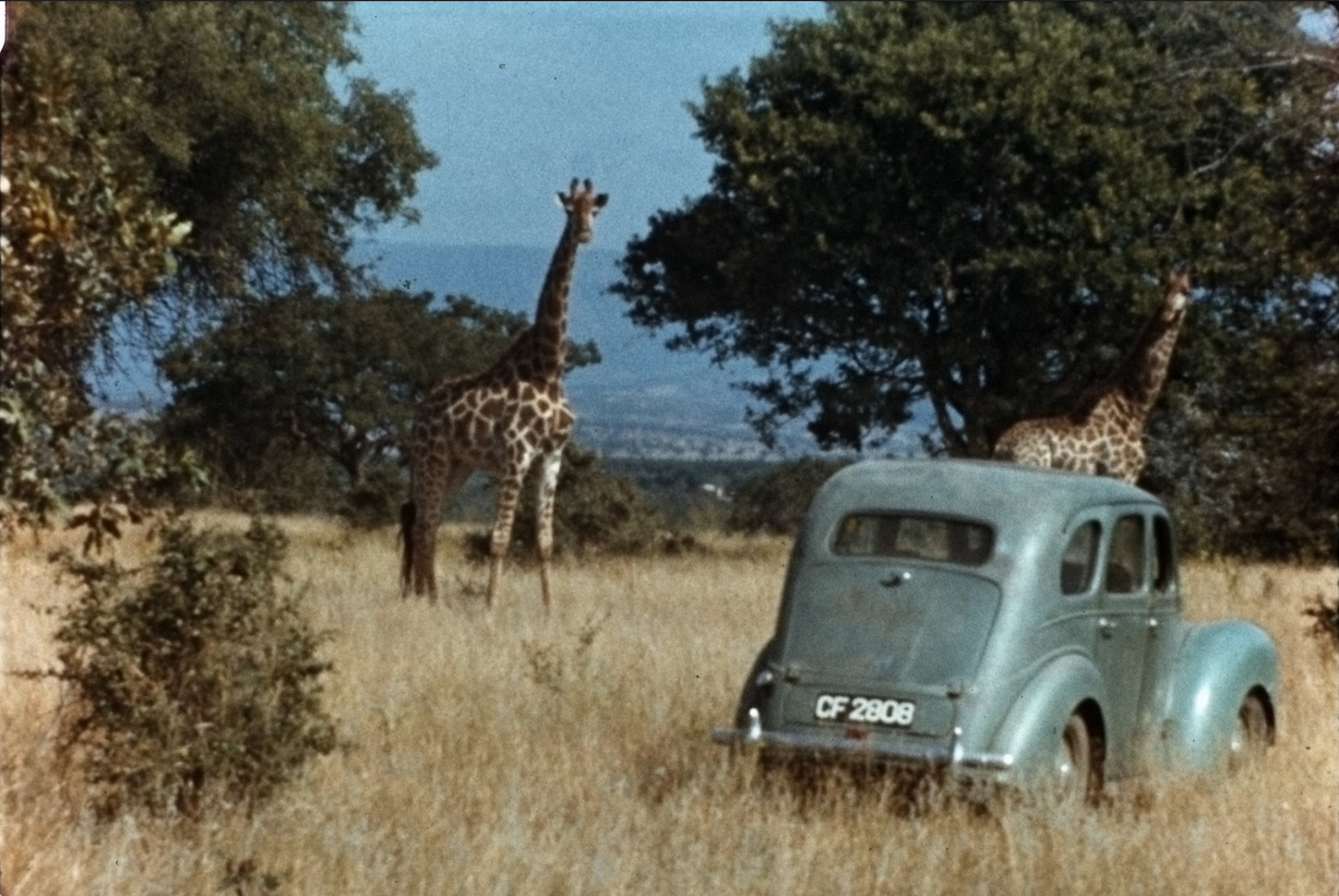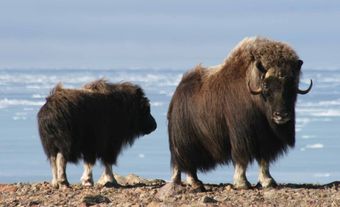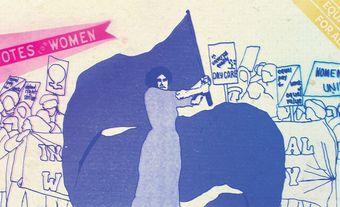
Early Life
Anne Innis Dagg was born to Mary Quayle and Harold Adams Innis in 1933. She has three older siblings: Donald, Mary and Hugh. Anne’s father was a pioneering economic historian and professor at the University of Toronto. His books The Fur Trade in Canada (1930) and The Cod Fisheries (1940) helped shape the study of Canada’s political economy. In 1964, 12 years after his death, Innis College at the University of Toronto was named in his honour.
Dagg’s mother was also an author and academic. Her work An Economic History of Canada (1935) was used as a textbook in her husband’s courses. She served as dean of women at the University of Toronto’s University College from 1955-64. Mary Quayle Innis also wrote fiction, including a novel and short stories for national magazines such as Saturday Night.

When Dagg was three years old, her mother took her to the Brookfield Zoo in Chicago, Illinois. There, Dagg saw a giraffe for the first time. “It immediately became my favourite animal,” she writes in her memoir, Smitten by Giraffe. “I wanted to learn everything about it.”
Education
As a high school student, Anne Innis Dagg entered the science stream at Bishop Strachan School, a prestigious all-girls school in Toronto.
Dagg completed a bachelor’s degree in biology in 1955 and a master’s degree in genetics in 1956, both from the University of Toronto. In 1967, she received her doctorate from the University of Waterloo in animal behaviour. Her thesis analyzed the gaits of the American antelope, nine species of deer, and six species from the cattle family.
First Trip to Africa
In 1956, at the age of 23, Anne Innis Dagg made her first trip to Africa. From 1956 to 1957, she studied giraffes at the Fleur de Lys Ranch near Kruger National Park, South Africa.
In an effort to convince the owner of the ranch, Alexander Matthew, to let her come, Dagg signed all her correspondence with him as “A. Innis.” In doing so, Dagg knew Mathew would presume her a man, and therefore be more likely to let her come. There was a brief delay when Mathew, having realized Dagg’s sex, wrote to tell her she could no longer be his guest. Dagg’s persistence eventually persuaded him, however, and she continued her journey to the ranch.

Having arrived in South Africa by boat, Dagg drove to Fleur de Lys in a second-hand Ford Prefect she named Camelo, after the giraffe’s scientific name Camelopardalis. She made the trip alone — a dangerous journey for a single, white, foreign woman during the apartheid era. Dagg continued to make use of Camelo after arriving at Fleur de Lys. The car served as a hiding place, and Dagg spent hundreds of hours observing giraffes from within its sweltering confines.
Research
In 1958, Anne Innis Dagg published her observations of giraffes in South Africa in the journal Proceedings of the Zoological Society of London. Her article, titled “The Behaviour of the Giraffe, Giraffa Camelopardalis, in the Eastern Transvaal,” was the first scientific article about an African mammal ever published.
In 1976, Dagg published her first book about giraffes. The book was co-authored with Bristol Foster, a former classmate at the University of Toronto, and titled Giraffe: Biology, Behaviour and Conservation. Zoologists around the world consider the book the “Bible” on giraffes.

Dagg spent the years between her first trip to South Africa and the publication of Giraffe researching the animal and tending to her young family. As part of this research she analyzed giraffe gaits, feeding the 16 mm film she had taken at the ranch through a projector perched atop a card table. In her memoir, Dagg writes, “The table was later made higher so that I could stand up while tracing the features of each of the hundreds of strides; this was because if I sat down one, or later both, of my small boys, Hugh and Ian, would scramble onto my lap to ‘help.’”
In addition to laying the foundation for scientific research on giraffes, Dagg’s studies were pioneering in other ways. She was the first, for example, to describe homosexual behaviour in the wild in an English scientific paper. Dagg did so in her 1958 article about giraffes. An earlier researcher, Murray Levick, had observed male homosexual behaviour in Adelie penguins in 1910-13; however, he was so uncomfortable with what he saw that he published his findings in Greek so that few could read them. Ongoing homophobia meant that, in 1984, when Dagg published a survey of homosexuality in 125 different species, she was still the only zoologist studying the subject.
Teaching Career
In 1962, Anne Innis Dagg began teaching as a part-time lecturer at Waterloo Lutheran University, now Wilfrid Laurier University. In 1968, she was hired as a full-time assistant professor in the zoology department at the University of Guelph.
Despite her experience and expertise in the field, when Dagg applied for tenure in 1971 she was denied. “One dean told me he would never give tenure to a married woman because she had a man to support her,” Dagg writes in Smitten by Giraffe. “Case closed.”
Shortly thereafter she applied for a job as a biologist at Wilfrid Laurier University. She didn’t get an interview. Later, Dagg discovered the all-male hiring committee had chosen one of their friends, someone with far fewer publications than Dagg. She took the case to the Ontario Human Rights Commission and eventually lost. During this time, she also applied for work at Western and York universities, and was turned away.
Dagg was never granted tenure. She did, however, work for 35 years for the University of Waterloo’s independent studies program, from 1978 to 2013. During this time she served as resource person, senior academic advisor, and academic director.
Feminism
The sexism Anne Innis Dagg experienced throughout her academic career informed her fight for equality between men and women. In her memoir, Dagg describes the moment she realized discrimination extended beyond her personal troubles. She writes, “I would no longer obsess over my own problems with sexism but fight for equality for all academic women, for women of all sorts, for anyone suffering from tyranny.”
Dagg’s activism took many forms, from advocating for women in universities to writing a newsletter about sexist language. The idea for the newsletter, founded in 1983 and called Language Alert Newsletter, grew from arguments with authors Pierre Burton and Northrop Frye over their use of sexist wording. In it, Dagg detailed the sexist language used in whatever she was reading at the time. One issue, for example, noted the World Wildlife Fund’s use male pronouns to describe the Peregrine falcon, while another focussed on the titles of university courses such as “Anthropology and the Future of Man.”
Her fight over sexist language in academia was part of a larger campaign to make universities more welcoming to women. In 1988, for example, Dagg, along with one of her students, Patricia Thompson, published MisEducation: Women and Canadian Universities. The book described the sexist culture at Canadian universities, and advocated for less government funding to those institutions with discriminatory practices.
Personal Life
Anne Innis Dagg married Ian Ralph Dagg (1928-1993) when she returned from her first trip to Africa. Ian was a physicist she had met as an undergraduate at the University of Toronto. In 1959, the couple moved to Waterloo after Ian accepted a job at the University of Waterloo. They had three children: Hugh (1960), Ian (1962) and Mary (1965).
In 2006, Dagg published Pursuing Giraffe: A 1950s Adventure, detailing her year spent studying giraffes in South Africa. Toronto-based filmmaker Alison Reid was inspired by the story. Her documentary about Dagg, called The Woman Who Loves Giraffes, was released in 2018.

 Share on Facebook
Share on Facebook Share on X
Share on X Share by Email
Share by Email Share on Google Classroom
Share on Google Classroom



